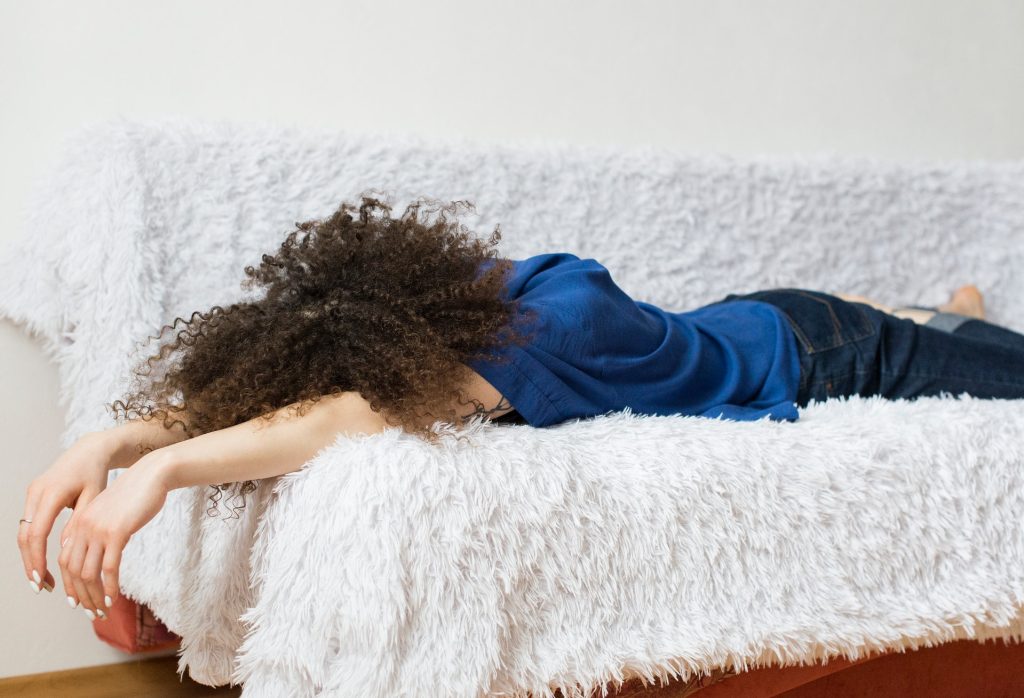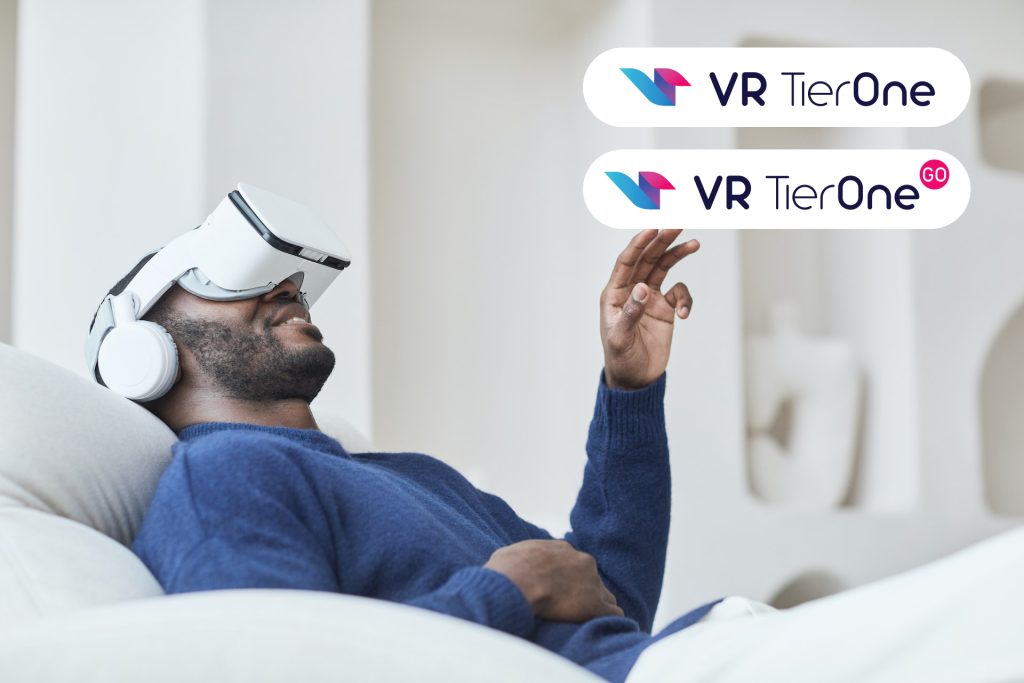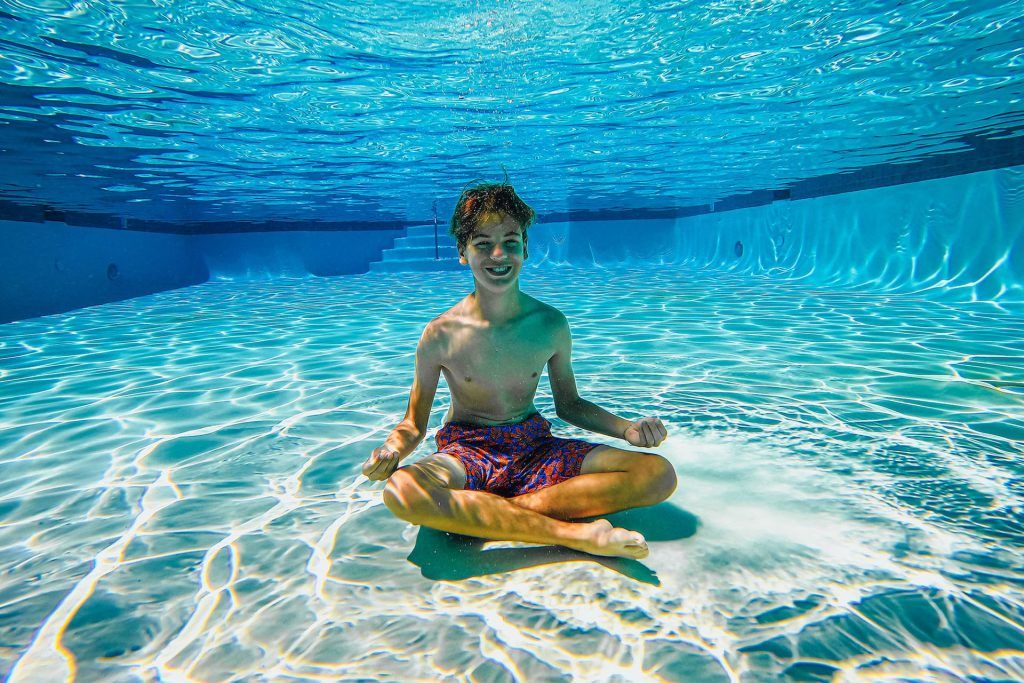Anxiety disorders belong to the most common mental disorders. The axial symptom for this group of disorders is anxiety experienced both on the mental and the physical level. Anxiety is the most common symptom of depression and, like depression, it is more frequently diagnosed in women than in men. Anxiety and depressive disorders can occur in connection with physical illnesses, both as their cause and effect. In the event of illness, the symptoms of anxiety and depression not only hinder functioning, but also postpone recovery. The anxiety states that accompany the patients adversely affect the course of treatment. VR TierOne enables the therapy of anxiety disorders in sick, hospitalized and rehabilitated patients, which can take place in Virtual Reality.
Irrational fear
Fear and anxiety are experienced as a strong emotional arousal with accompanying physical symptoms. Fear is an unpleasant experience, but it has a positive value for a person. The fear generated in the brain is designed to keep us alive and help in a situation that threatens our existence. Such fear is associated with a real threat, as opposed to fear that is induced by irrational threat. Anxiety triggers a cascade of symptoms that puts the body on alert, even though there is no rational justification for it. A physiological reaction arises as a result of the interpretation of a given situation as threatening and causing anxiety. Anxiety-marked thoughts have the consequence in form of stimulation of the sympathetic part of the autonomic nervous system, which is activated regardless of the reality of the stimulus. Therefore the experience of fear is the result of belief, and not of a fact.
Anxiety disorders
Anxiety disorder is a state of excessive anxiety that is disproportionate to the circumstances. Anxiety becomes a disorder when it paralyzes the life of a person. Anxiety disorders are not a homogeneous group of disorders, and they can take the forms of:
- panic attacks of short-term anxiety nature,
- generalized anxiety disorder (GAD), where the feelings of anxiety persist most of the time,
- post-traumatic stress disorder (PTSD) resulting from traumatic events,
- obsessive-compulsive disorder (OCD) associated with obsessive thoughts and actions.
A person with anxiety disorders experiences anxiety on four levels: emotional, cognitive, somatic and behavioural. In the sphere of emotions, there is fear, sense of threat, feeling of terror, inner anxiety and increased vigilance. Remaining in a state of tension and awaiting for an unclear threat reduces cognitive abilities, causing difficulties in concentration and intellectual fatigue. Anxiety is an unpleasant systemic experience, therefore its behavioural manifestation is avoidance of the anxiety stimulus. Such behaviour includes both avoiding situations, objects and, in a broader context, emotional avoidance. While avoidance helps reduce anxiety temporarily, it is not an effective solution.
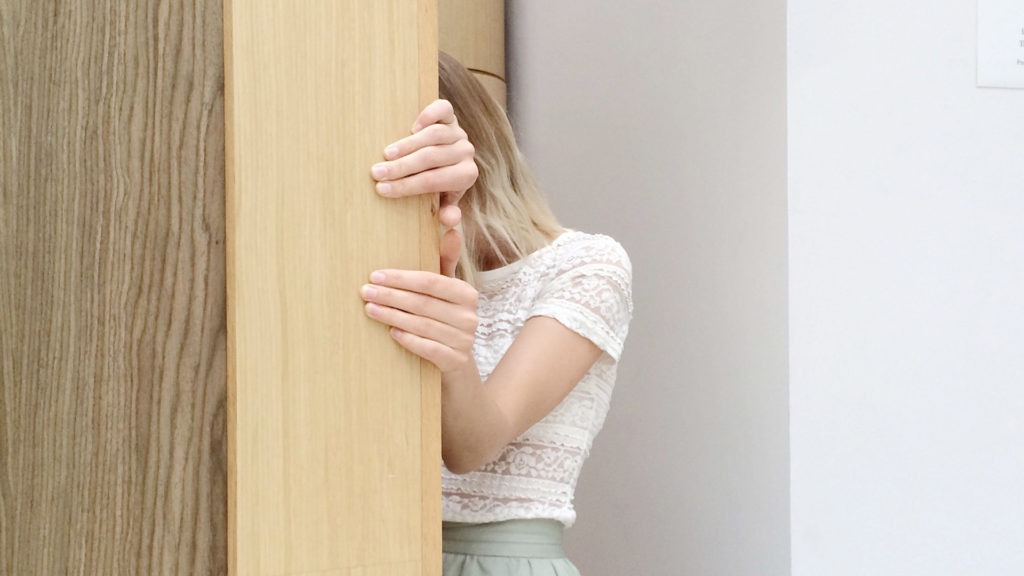
Anxiety therapy
Anxiety disorders can be treated with pharmacotherapy in the form of anxiolytics, psychotherapy and relaxation methods. Relaxation is of great importance in the treatment of anxiety disorders, as it ensures proper mental hygiene. Lack of rest, and even inadequate breathing causes the nervous system to malfunction, which can be manifested by anxiety. VR TierOne therapy based on relaxation and Ericksonian psychotherapy is a non-pharmacological method that helps reduce anxiety.

The VR TierOne medical device can be applied to carry out a therapy, which is especially useful in the case of post-traumatic stress disorders triggered by the sudden experience of a serious life-threatening disease, such as a heart attack, stroke or COVID-19. Excessive anxiety prevents patients from recovering, hinders effective treatment, and prevents correct work with patients during rehabilitation. Anxiety exacerbates disease conditions, and in the result thereof patients require hospitalization more often. VR TierOne therapy is effective in treating anxiety in neurological, cardiological and pulmonary rehabilitation because it:
- puts the patient in a state of relaxation
The stay in the virtual Garden of Rebirth creates ideal conditions for calming the sympathetic part of the nervous system. State of relaxation activates the parasympathetic system responsible for rest, regeneration, relaxation and the potential of the body’s forces. A large amount of stress and anxiety on a daily basis requires a balance in the form of an appropriate amount of relaxation necessary to maintain a good mental condition. Psychomotor agitation caused by anxiety, remaining in tension, while waiting for an imaginary threat is associated with energy expenditure, therefore it is psychophysically exhausting.
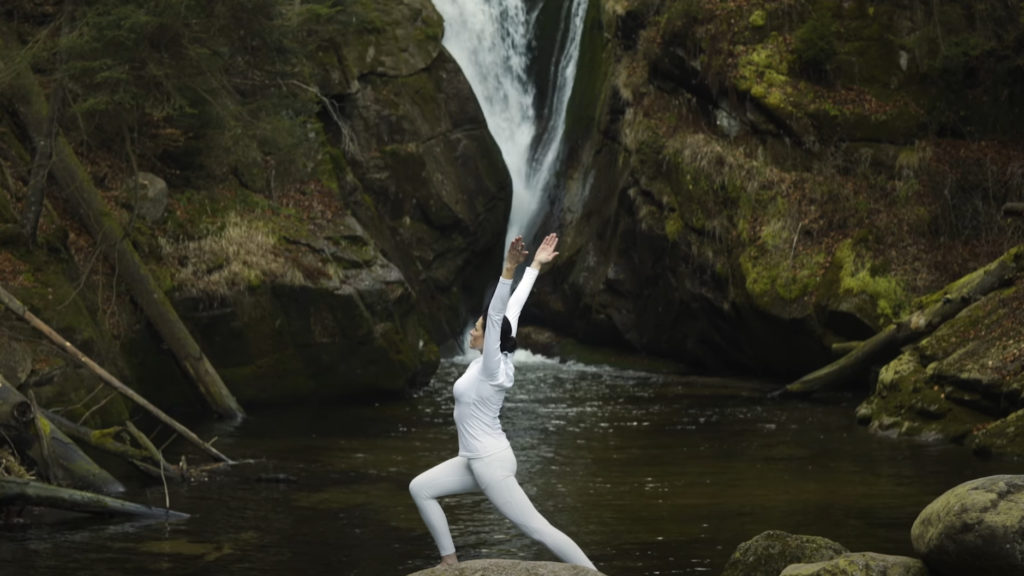
- helps to reduce stress
Limiting the sources of unnecessary stress is as important as reducing its effects. There is a relationship between stress and anxiety. Chronic stress can trigger extreme levels of anxiety, causing anxiety disorders. Stress is the main pathogenetic factor for both anxiety disorders and depression, so our mental and physical health both benefit from the reduction of stress levels. The virtual therapeutic zone is free of any stressors. By cutting off the inflow of stressors from the outside and immersion in a friendly virtual environment we allow the patients to distance themselves from everyday stress, worries and fears.
- provokes reflection
Controlling thoughts and emotions allows us to reduce the somatic symptoms of anxiety resulting from excessive activity of the nervous system. A therapeutic message rich in metaphors and symbols encourages reflection and changing beliefs about current situation. Patients overwhelmed with fear avoid experiencing difficult emotions and do not let them speak. Traveling deeply into yourself, confronting your own emotions, as difficult as it may be at first, helps us rediscover ease and joy. The therapy strengthens self-awareness and makes it easier to change anxiety thoughts into positive ones that will be conducive to health.
- strengthens the patients’ faith in their abilities
Lack of self-confidence can be a source of anxiety, and conversely, anxiety disorders can contribute to lowered self-esteem. Low self-esteem results in the patients failure to accept challenges for fear of failure. Persons suffering from anxiety disorders do not believe in their own strengths. The virtual therapist tells a story that focuses on making the patients aware of their own resources and bringing the patients’ internal strength to the fore. Virtual therapy supports and motivates the patients to take action, achieve goals and not lower their expectations
- helps to concentrate
Fear and the accompanying racing thoughts limit the patients’ ability to focus on the present moment. During the immersive therapy in the virtual world, the patients are, in their entirety, “here and now”, ceasing to focus on excessive fears and worries. A twenty-minute therapeutic session is the optimal time to practice mindfulness and feel the present calmly.
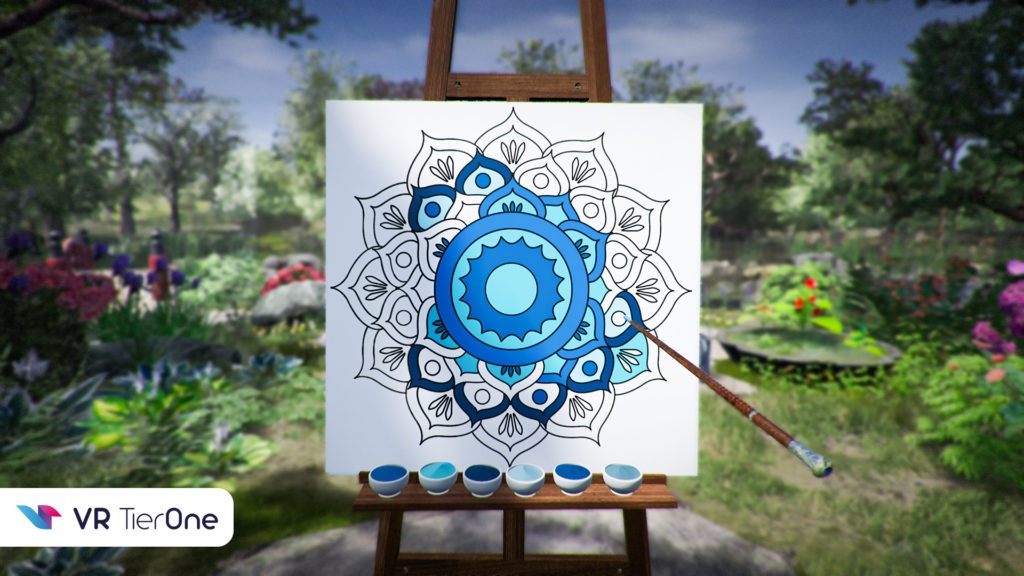
- improves the mood
Patients with freely flowing anxiety are in a state of constant mental discomfort. People with anxiety are characterized by complaining and creating catastrophic scenarios of events that sustain their anxiety and poor mental well-being. Patients live in the past and projections of a pessimistic future. Stopping in the present for the time of therapy, in the beautiful surroundings of a virtual garden, prevents the accumulation of bad emotions and brings well-being.
- brings harmony
Pictures, tasks and sounds bring about relaxation, during which the brain generates alpha waves characteristic of the state of calm and alert relaxation. In the alpha state, the work of both cerebral hemispheres is synchronized, which translates into experience of harmony of the mind and body. On the other hand, the amount of beta brain waves that cause a feeling of nagging anxiety is reduced.
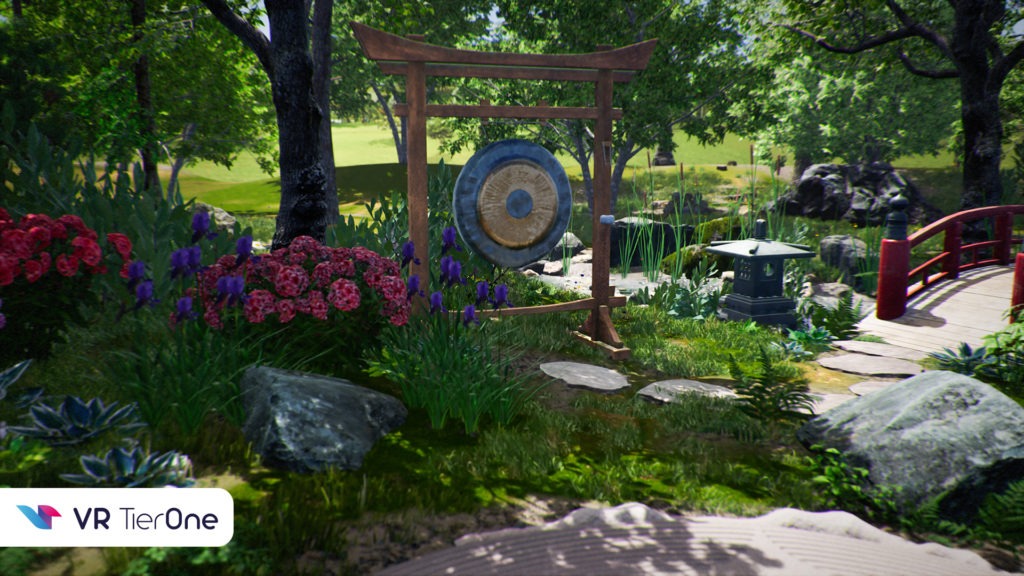
- supports convalescence
Patients with anxiety states often give up planned treatment and rehabilitation, even though they require such activities. The patients are willing to recover, but the fears and dark thoughts overwhelming make them give up trying for their own health. Therefore, anxiety disorders disturb and harm a person. Anxiety therapy restores energy and strength to continue and actively participate in rehabilitation. VR TierOne allows us to recover without fear, at the right pace and at the right time.




